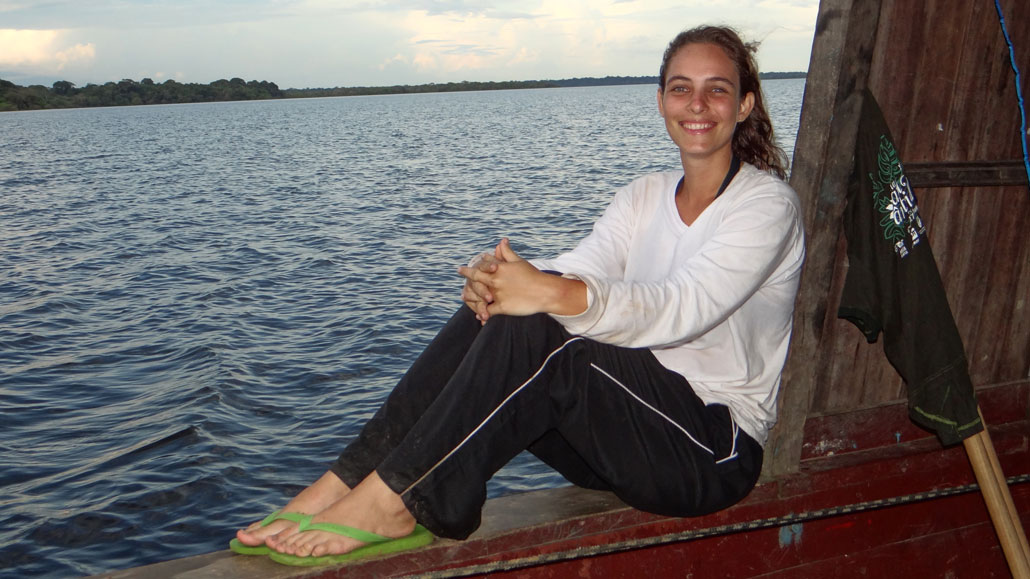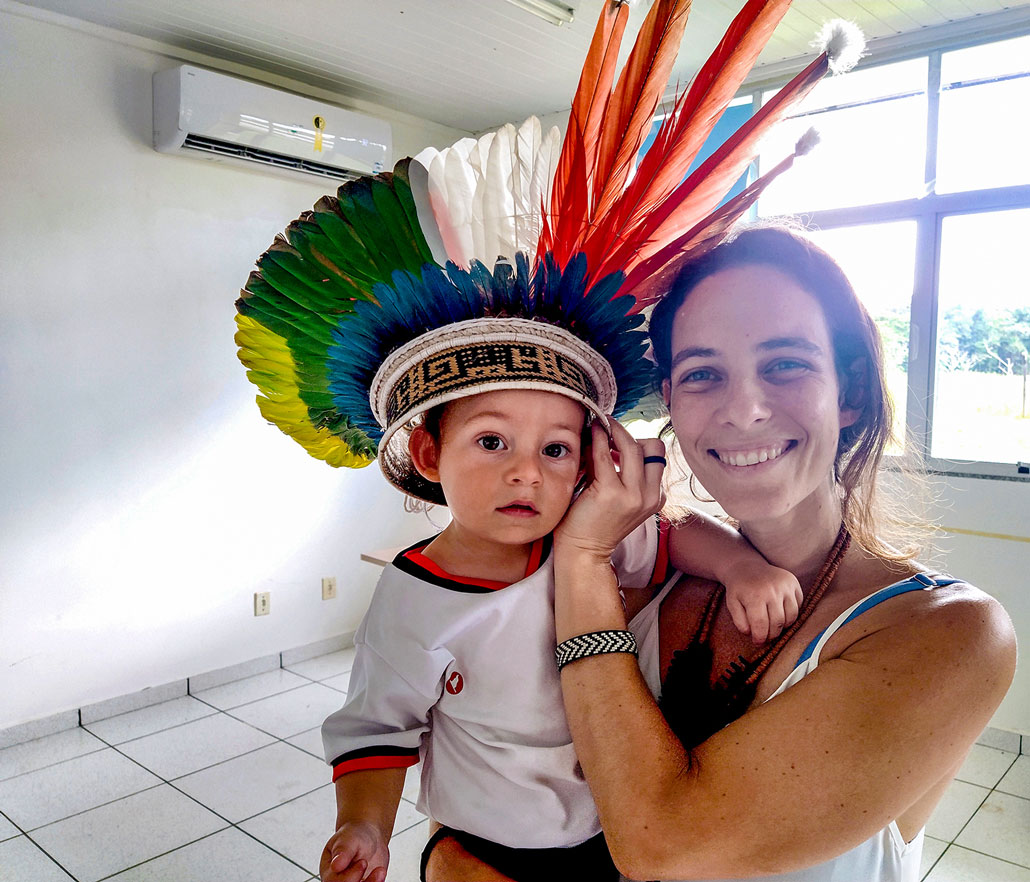This ecologist is looking at the Amazon’s past to save its future
Carolina Levis looks to Indigenous knowledge to understand Earth’s largest rainforest

Carolina Levis has traveled deep into the Amazon (here, she's on a boat returning from Lake Acará in 2013) in her efforts to better understand how Indigenous knowledge can help protect the rainforest.
BERNARDO FLORES
One of ecologist Carolina Levis’ favorite memories of working in the Amazon rainforest involves ceramics. At the Federal University of Santa Catarina in Florianópolis, Brazil, Levis studies how local communities influence the Amazon. Early in her career, Levis visited an Indigenous town to learn more about the history of the people there. She noticed beautiful pottery lying on the ground. The pieces, she learned, came from the ancestors of those people. “Some were more than 500 years old,” says Levis.
But people have left more than ceramics behind in the Amazon. Today, over 2 million Indigenous people call the Amazon home. Their ancestors have been growing crops such as squash, tubers and nut trees for thousands of years in the Amazon basin. Local communities continue to cultivate some of these plants today.
Levis studies how these practices led to the variety of plants currently found in the rainforest. And she wants to know how Indigenous knowledge can be used to help protect the Amazon rainforest. In this interview, Levis shares her experiences and advice with Science News Explores. (This interview has been edited for content and readability.)
Q: What inspired you to pursue your career?
I enjoy outside activities and being in nature. I was really intrigued with how we can feel better in these places and interact with them without causing more damage. Humans have a habit of destroying nature. Visiting nearby natural places made me feel better when I was living in Rio de Janeiro. There weren’t too many around, though.
I wanted to find different communities that had unique relationships with nature. I was eager to see what we could learn from them. I decided to move to the city of Manaus in the middle of the Amazon rainforest. I wanted to feel the energy of the forest and see how integrated the local people were with the forest. I discovered that we can have many different kinds of relationships with nature that aren’t always detrimental to those places. I started to document these practices that are good for nature.
Q: What are some of these practices?
They manage and take care of the lands. By doing so, they cultivate these gardens filled with fruits and nuts we love to eat (such as acai berries, cacao and different nuts) without harming the forest. I think many people are unaware of how local communities have shaped what many see as a completely natural space. The Amazon rainforest is not just created by natural processes.
I had the opportunity to really feel and taste all these delicious fruits because of the work of these people. I also realized that we could learn from people outside of the Amazon. I’m now living in southern Brazil, where many local communities are also producing good things. I’m dedicated to showing that humans can be good for nature.
Q: How do you get your best ideas?
Sometimes when I go to bed, I’ll think about my work while drifting off. I’m not entirely sure if I’m dreaming or not. When I wake up, though, everything is clearer, and I know what to do about difficulties with my work. Right now, I’m working with Indigenous researchers. They told me that they create new knowledge through dreaming. I found that interesting because we don’t practice that in formal science.
Q: How has that influenced your current work?
I’m working on an article that’s about how we can engage Indigenous knowledge in conservation science. We’ve been holding small meetings with five Indigenous researchers and five non-Indigenous researchers. We talk about how they view the Amazon and produce their knowledge. We are trying to understand how we can maintain the Amazon in the future.
These conversations led me to start reflecting on how we do science. Sometimes, we find a lot of differences in the way that we do things. On one hand, we need to be objective in science and follow a protocol. These protocols need to be reproducible if someone wants to replicate your scientific studies. But to have innovative ideas, we also need to not just follow procedure. We may also be inspired by an experience or conversation that provides us with a different insight.
The Indigenous researchers I spoke with integrate this knowledge in a more holistic way. As scientists, we feel that we are so objective. As people, though, we are also subjective and integrate many different things into our work.
Q: What is one of your biggest successes?
Having my work published in the scientific journal Science was a major accomplishment. I felt that our message reached a big audience. I also gave a lot of interviews, and we received quite a bit of press. It was great to see people acknowledging our work. In my personal life, the birth of my son two years ago really transformed my life.

Q: What’s one of your biggest failures and how did you get past that?
My first failure related to my career was when I didn’t pass my entrance exams for getting into the university that I wanted. I thought everything would be fine and easy, but it was not. I spent the next year studying to take the exam again.
Doing research in the field can be a big challenge. We often go to really isolated places when doing field work in the Amazon. We are aware that if something happens to us, we can die. If a venomous snake bites you out there, you are far away from a hospital. We need to manage those feelings while doing our work and collecting data.
I submitted our Science paper to two other scientific journals before it was accepted. At the time, I didn’t feel that the article was good enough to be published in a major scientific journal like Science. I tried other journals and was rejected immediately. My coauthors and supervisors said that we had nothing to lose by submitting it to Science. We tried again and they accepted it. That experience showed me that we need to commit ourselves to what we think we should be doing. We cannot give up when it comes to science. We need persistence.







